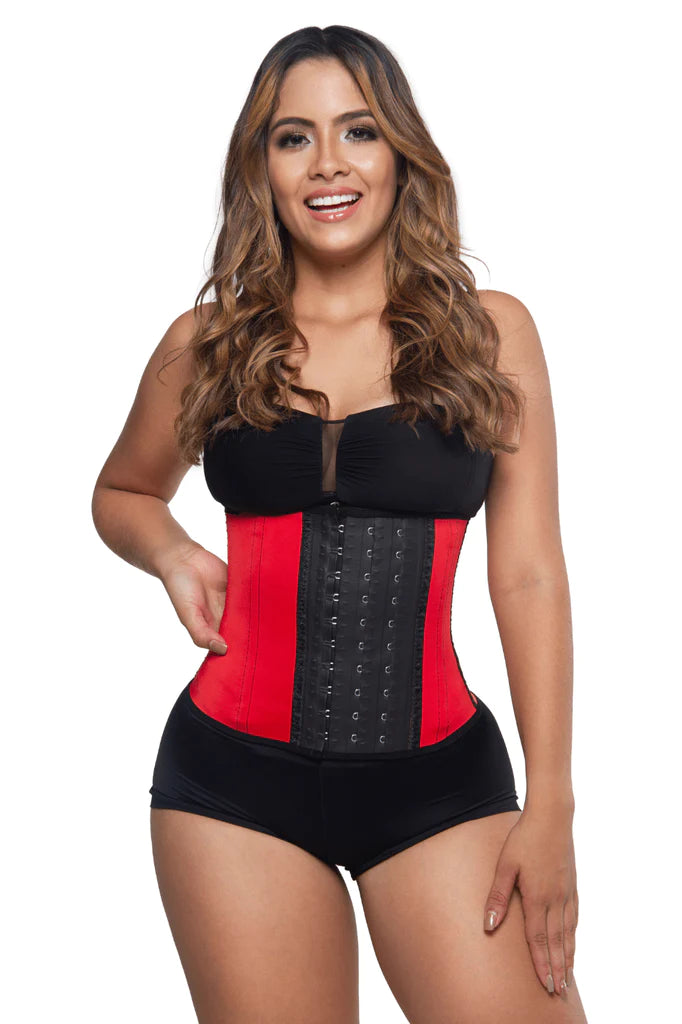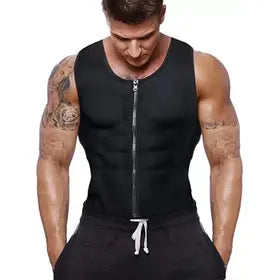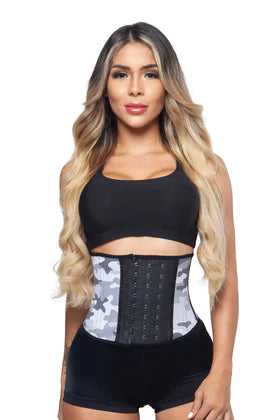
Do You Need To Lose Weight Before Buying a Waist Trainer?
Many people have a fundamental question when they begin their waist training journey: Do I need to lose weight before buying a waist trainer? A waist trainer will start correcting your posture and alignment the moment you put it on. It can also shrink your waist a few inches instantly. However, if you want to lose weight, it is best to incorporate your diet and exercise changes when starting your waist training goals.
What size of waist trainer will fit?
If you start waist training, you might be worried that your waist trainer will not look flattering or that if you lose weight quickly, your waist trainer will no longer fit. When you go to measure for your waist trainer, you will take your measurements for the narrowest area of your waist and measure your torso from under your bust to below your bikini line. Then, after looking at our sizing chart, you will find a suitable waist trainer.
Essentially, there is a waist trainer for everyone. Waist trainers do not come in a standardized size. Each size comes uniquely designed for people of different heights, weights, and torso shapes. People who consider themselves "plus-sized" can find a waist trainer that fits them correctly. Those who are fit and in condition can also find an appropriate waist trainer to help them take their fitness to the next level.

How does waist training work?
Waist training, by itself, is a discipline of wearing shapewear or a waist trainer for eight to ten hours each day. During the first week, the wearer will work up to the recommended 8 to 10 hours per day of wear. The waist trainer will work the core muscles in the body, correct posture and alignment, and help shape the waist to the desired appearance. Most people want an hourglass-shaped waist.
Waist training works particularly well when it includes diet, exercise, and lifestyle changes that increase metabolism and burn excess fat. Over time, the individual who is waist training will notice that their shape improves, they fit into the clothes that they like, and overall their physique looks better.
How does diet play into waist training?
Diet plays into waist training on a wide variety of different fronts. Most people tend to overeat for a wide variety of reasons:
- They experience "portion distortion," where they consume a portion larger than a food's recommended serving size.
- They eat too many calories per day.
- They eat too many high-calorie foods.
Diet and nutrition are as varied as the individual. Some people require more calories per day than others to maintain their weight level. The average recommended calorie intake depends upon a person's size and varies between 1,600 and 3,000 calories. The average person will overeat that amount by about 1,500 calories per day. Overall, weight loss is fueled by eating healthier foods and reducing calorie intake. Here are some guidelines to make diet part of your waist training routine:
- Eat more fruits and vegetables. These are richer in vitamins and minerals, as well as fiber that makes you feel full more quickly.
- Eating lean proteins like fish and chicken will help your body build lean muscle mass and reduce the amount of stored fat.
- Avoiding starchier grains will help the body reduce the number of unneeded carbohydrates throughout the day.
- Eating smaller, more frequent meals throughout the day will reduce snacking and make the body feel full.
When you are waist training, make sure to record how much you eat and what you eat. Also, take careful stock of the nutrition labels on the food and beverages you consume. Some packaged food will contain two or more servings. Taking stock of the nutrition label will help you gauge how much food you consume in one sitting.
What types of exercise work well with waist training?
A range of exercise regimens will work well with waist training. Many people incorporate strength training, cardio work, and other exercise regimens into their waist training activities. The type of exercises you do during waist training depends on your fitness and goals. For example, those trying to lose weight might want to select a workout that burns calories. Here are some sample exercises that burn calories efficiently:
- Stationary cycling burns about 210 calories per 30-minute session.
- Walking can burn anywhere from three to four calories per minute.
- Jumping jacks can burn as many as twelve calories per minute.
- Jumping rope can burn as many as nine calories per minute.
Waist training also helps tone muscles and increase the body's muscle mass. Here are some exercises that increase the amount of lean muscle that is present in the body:
- Lifting free weights.
- Using stationary weight machines.
- Working with resistance bands and exercise balls.
- Doing pushups and squats.
The Physical Activity Guidelines for Americans suggest that the average American should do some strength training at least twice per week to maintain their fitness levels.
Cardiovascular activities are also essential for waist training. For example, using a treadmill, elliptical machine, biking, or swimming can jumpstart your cardiovascular fitness. Cardiovascular exercise sets the stage for muscle growth and function.
When you increase your exercise levels, it is essential to incorporate recovery into your workout cycle. Some people do lighter exercise days as part of their recovery process. Recovery is significant because it helps the body rebuild muscle tissue consumed during an intensive exercise session.

What other lifestyle changes go along with weight loss and waist training?
When you start waist training, you should also make significant lifestyle changes in addition to diet and exercise. For example, getting enough sleep is a high-priority activity. Lack of sleep produces two substances in the body that increase food cravings. These substances are the hormones leptin and ghrelin. People who only sleep five hours per night are 32% more likely to gain weight than those who sleep the recommended eight to ten hours. Even when working out, sleep is vital in helping repair your muscles.
Poor posture also contributes to weight gain. While your waist trainer will help correct your posture and alignment, practicing good posture at work or home can help. Poor posture puts pressure on the digestive system, leading to a lower metabolism level.
Hydration also plays a massive role in weight and metabolism levels. When you are not hydrated, your body will retain water. Water helps deliver nutrients throughout your body. When you are dehydrated, your metabolism rate drops because your body cannot quickly circulate nutrients throughout your body. When you are working out, you will want to plan on drinking as much as 10 ounces of water for every 30 minutes you spend working out. It would help if you generally planned on drinking 8 to 10 glasses of water per day, but more active people will likely exceed this.
Other things slow your metabolism. For example, if you don't get enough calcium, it will impact your body's ability to generate new connective tissue, build healthy bones, and channel nutrients throughout your body. You can supplement calcium or increase your daily dairy intake to help you get the calcium levels you need.
Stress is also another factor that slows your metabolism. When you are stressed, your body produces a hormone called cortisol to give you a quick energy boost to make it through the situation. However, too much cortisol over time will slow your body's ability to use insulin effectively. So the more stressed you are, the less effective you are at burning energy in your body. Eliminating stress will help you metabolize sugars in your body more effectively.
Do you need to lose weight before buying a waist trainer?
You do not need to lose weight before buying a waist trainer. Your new waist trainer will motivate you to start doing the things needed to get back in shape. Your waist trainer will immediately correct your posture and alignment and work your core muscles. You will take your waist training to the next step when you incorporate diet, exercise, and lifestyle changes as part of your waist training regimen.
What you need before you buy a waist trainer is a plan. Laying out your goals will help you achieve success. Start with outlining where you'd like to be in six months. Then, lay out some other short-term goals that will help you achieve measurable results each week. Then, you will be in a place where success is attainable and the waist trainer will be an excellent investment.








